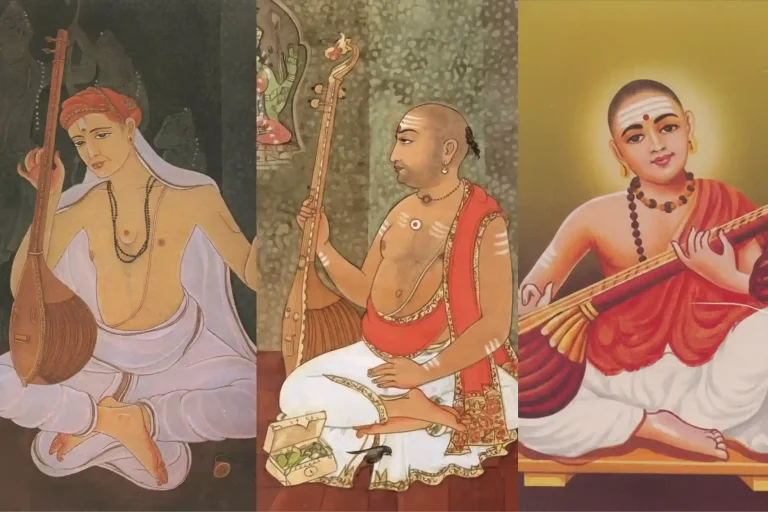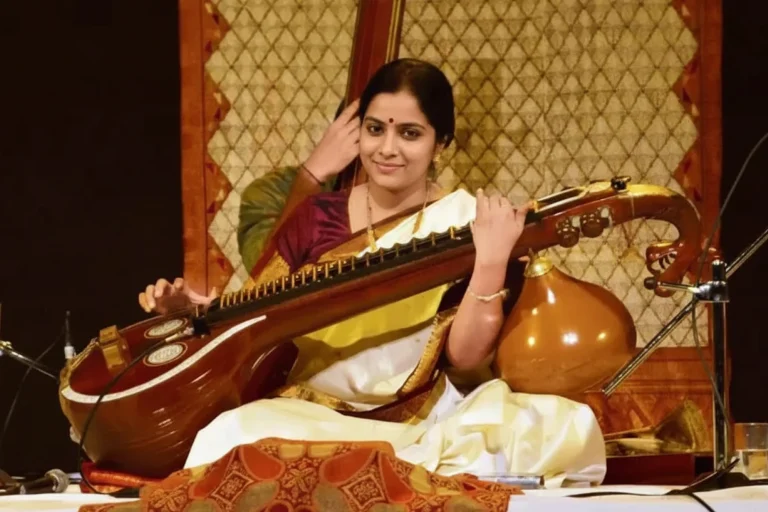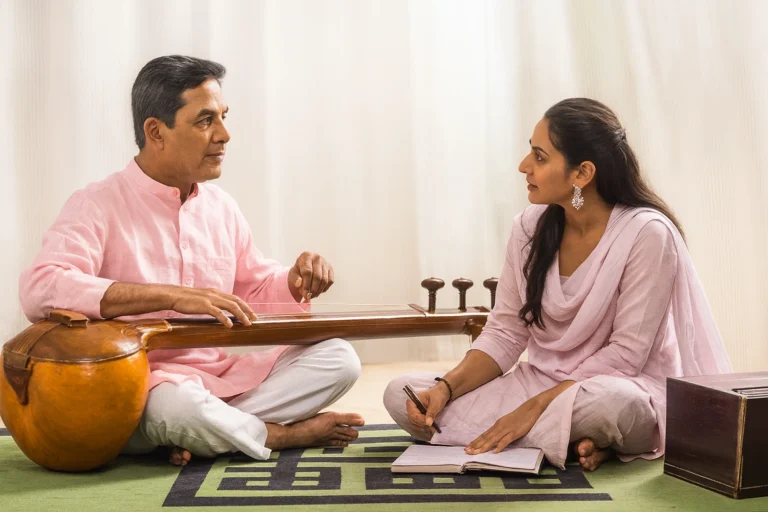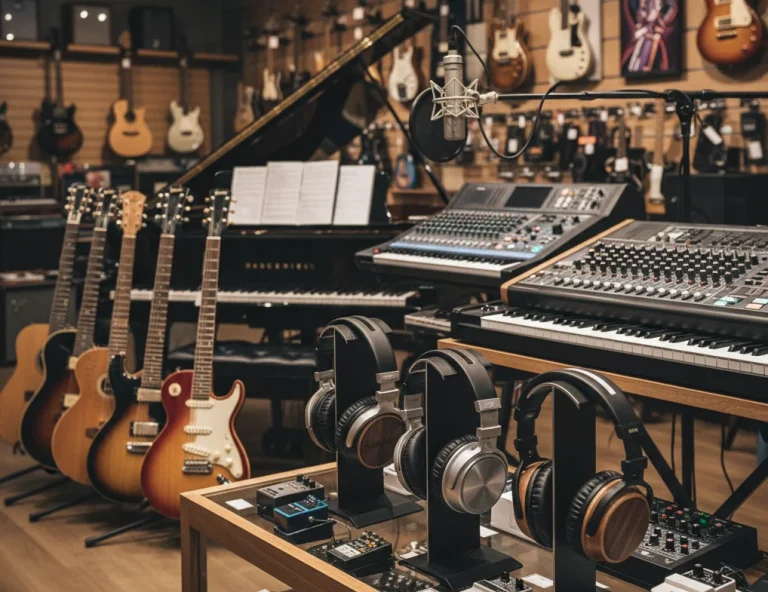All Topics
- Alchemizing Music Concepts for Students
- Artist Spotlight
- artium gift card
- Artium Maestros
- Artium News
- buying guide
- Carnatic Music
- Devotional Music
- Editorials by Ananth Vaidyanathan
- Film Music
- Guitar
- Hindustani Classical Music
- Indian Classical Music
- Indian Folk Music
- Insights
- Instruments
- Karaoke Singing
- Keyboard
- Kids Music
- maestros
- Music Education
- Music for Kids
- Music Industry
- Music Instruments
- Music Legends
- Music Theory
- Music Therapy
- Piano
- piano guide
- Success Stories
- Tamil Film Music
- Telugu Film Music
- Time Theory
- Tools
- Uncategorized
- Vocal Singing
- Vocals
- western classical music
- western music
- Western vocal music
What is the Right Way of Singing Carnatic Music?
What is the Right Way of Singing Carnatic Music?

Table of Contents
Carnatic music is a highly respected form of Indian classical music, renowned for its intricate melodies, complex rhythms, and profound emotional depth. To be a successful singer in this style, you need to follow a set procedure that helps you get good at both the expressive and technical parts of performing.
The basics of Carnatic music enable people to express deep feelings; therefore, the following are detailed explanations of how to sing it while preserving the original words and adding to the substance for a comprehensive understanding.
People from all walks of life have come to like this type of music. India has a long history of literature, including scholarly works, myths, poems, and plays. A look at this body of work reveals a consistent pursuit of new ideas and originality.
Musicians, instrument builders, and eager amateurs have worked diligently to create this vibrant landscape. The term “Carnatic music ” comes from the Sanskrit phrase “Karnātaka Sangītam,” which means “traditional” or “codified” music and emphasizes its structured and rich cultural legacy. Through this art form, musicians still celebrate and convey strong feelings that are a part of their culture.
How Can You Properly Sing Carnatic Music?
1. Mastering the Basics
Knowing the basics like Saralevarse, Jantivarse, Dhatuvarse, and Alankarams, as well as the basic ideas like Shruti, Raga, Bhava, Tala, Laya, and Swara.
- Shruti, which means the lowest pitch or frequency that may be heard, is an important idea in Indian music. It is the basis for making melodies and is necessary for tuning instruments and singing correctly.
- Raga is a melodic framework that tells musicians how to write and play music. This changes the tone and feelings that the music portrays. Each raga has its own personality that might make you feel a certain way, and to really grasp it, you need to know its intricacies.
- Bhava is the emotional state that a performer conveys through their music, and it is a crucial aspect of capturing an audience’s attention. Being able to express diverse emotions makes the performance more powerful overall.
- Tala is the rhythmic part of Carnatic music that sets the melody in a cyclical way. Mastering tala is important for keeping the beat of a performance steady.
- Laya is the speed or tempo of the music; it changes how the audience hears the rhythm and makes the performance more dynamic.
- Swara, which means “note,” is the name for the different notes used in a raga. Musicians may make complicated melodic lines when they know what each note means.
You also need to know a lot about Saralevarse, which has simple melodic exercises; Jantivarse, which has exercises that focus on two-note combinations; Dhatuvarse, correspondingly, which has specific compositional exercises; and Alankarams, which are melodic embellishments or ornamentations. Mastering these concepts is the first step in learning more and is also what makes a good Carnatic music performance possible.
2. Knowing the Pitch and Rhythm
Pitch (Shruti) is the lowest frequency of a sound. This is the basis for strong Carnatic singing. Pitch (Shruti) is the lowest sound frequency that can be heard.
You can understand the pitching process by:
|
LRRUS stands for: L– Listening R– Registering R– Recognizing U- Understanding S– Singing |
- The first step is to listen, and it’s important to learn how to hear different pitches. The next phase is registering, where vocalists learn how these pitches work together in a raga and memorize them.
- The next phase is Recognizing, which is being able to sing along to recordings or music while also being able to hear the pitches.
- To understand, you need to know what each pitch means in the context of the chosen raga and how it makes you feel.
- The last phase is singing, which means using all you’ve learned in real-life situations.
Also, to keep the pitch right during the whole performance, you need to pay close attention to the sound’s frequency, which takes a lot of skill and attention to detail.
Rhythm, or tala, is a big part of Carnatic music . Musicians have to be able to hear the pulse of the notes through clicks, claps, taps, and snaps. Understanding the beat of the notes by claps, taps, snaps, and clicks, which can be simple repeating patterns or more complicated rhythmic sequences.
These two notions are related to learning the basics.
If you understand these concepts, it will be easier for you to grasp the basics.
You can start this exercise with simple cyclical rhythms, such as the 4-beat Adi tala. After that, it can progress to more complex rhythmic patterns that require greater coordination and understanding. Mastering both pitch and rhythm is crucial, as they are essential for grasping the fundamentals of Carnatic music. Getting a good handle on these parts will help you play better overall and better understand the more complex aspects of this kind of music.
3. Understand and Feel the Words
To connect with the music on a deeper level, you need to understand and experience the lyrics. The song “Yenenu Danava Madali,” attributed to Purandara Dasar, is a great example of a song with a lot of emotion.
This piece is played in Ragamalika, a style that combines various ragas and is set to Adi tala, a rhythmic cycle of great importance in Carnatic music.
It would be helpful to read the words that follow, which explain the idea and feelings expressed in the lyric “Yenenu Danava madali hari Dhyanakke samavaada daanangalunte.” These lines say:
Nana theerthagalalli Snanava maadali Kaananadolage tapava madali
Dhyanakke sariyunte purandara vitala ninna gnyanadinda shastrartha maadali.
In order to sing well, vocalists must fully understand the meaning and context of every word they sing. This emotional participation makes the song’s meaning much clearer, and it also helps the performer connect with the audience on a deeper level, making the experience more real and meaningful.
It starts at 30:15.
Feel every word, understand it, and say it in the right way.
4. The Right Voice is Employed in Carnatic music
- Sounds from the head and chest
- Proper propulsion (using the right gamaka)
- Knowing how loud the voice is
- Breathing correctly
- Being able to say how you feel
- Great pitch control
- Showing the complexities of a raga
This can be shown by singing a short song.
4 Ways to Sing Carnatic Music Correctly

Anyone who wants to be a singer must know how to sing Carnatic music correctly.
These methods to be kept in mind:
1. Head voice and chest voice: Knowing when to use each vocal register makes the performance sound better and more emotive.
2. Proper propulsion: Learning how to use gamakas (ornamentations) is very important for making the rendering more expressive and for giving the performance a lot of energy.
3. Knowing how loud the voice is: No matter where the performance is taking place, being able to control the level ensures that the music will sound right and reach the audience.
4. Proper breathing: Good breath control gives you the stamina you need to play longer phrases and more complicated passages without becoming tired or hurting yourself.
Right way of practicing Carnatic music by sing foundational exercises
5. Effectively expressing emotions: The raga and lyrics should capture the emotional core of the performance and let the audience feel what you want them to feel.
6. Good pitch control: Keeping a steady pitch during a performance is important for polished delivery and aesthetic quality.
7. Showing the complexities of a raga: A musician can clearly and deeply show the unique nature of a raga by understanding the nuances that go with it.
Singing a short song that demonstrates how to utilize these techniques in action will help performers understand how to use them and the additional layers they bring to a performance.
8. Looking at improvisation in the composition: Improvisation is a big part of Carnatic music, and it means putting your touch to an existing sangathi or phrase. This gives the musician a new approach to playing the phrases and sangathis in the original composition, which lets them add their style to the song.
Two ways to improvise are through creativity and mano dharma, which is the inherent ingenuity a musician brings to their performance.
- Kalpana Swara is the art of singing made-up swara patterns within the limits of a raga and tala. This method allows each performer to add their own style to the raga while still fully understanding its structure.
- Nereval: Making up different creative phrases within the limits of a raga and tala to make a raga more beautiful
It’s up to the person who wants to add their creative touch to a raga’s beauty.
- Nereval also implies making a raga more beautiful by adding other inventive phrases to the raga and tala structure. In addition to showing off the performer’s skill, this strategy makes the raga played more expressive.
Improvisation is when you add your style to a phrase or sangathi that is already there.
Meaning: Creatively reimagining the lyrics and melodies while remaining true to the original song.
In the end, improvisation allows musicians to express themselves freely and encourages them to add their unique beauty to a raga while preserving the original composition, which is a blend of originality and tradition.
Understanding the Last Step in Learning Carnatic Music to Develop a Range of Performance Skills
These are:
- Mastering Raga and Tala and knowing percussionists
- Proficiency in vocal
- Emotional expression (Bhava)
- Knowing the words
- Discipline and practice
- Skills for making things up
- Presentability
- Dedication, passion, and commitment
- Listening skills
- Adaptability (Being able to change and listen)
Mastering Raga and Tala and knowing percussionists: To perform in sync and without any problems, you need to know how to play with other percussionists and how to play Raga and Tala.

Proficiency in vocals: This is crucial in Carnatic music, enabling singers to drive complex compositions with accuracy and clarity by maintaining good vocal health.
- Emotional expression (Bhava): This is crucial because it enables the artist to connect with the audience on a deeper level.
- Knowing the words: A vocalist who knows the words to a song can better understand it in a real and meaningful way.
- Discipline and practice: Every musician should practice their music with discipline.
- Improvisation skills: These help musicians showcase their creative originality. Meaning: making a raga more beautiful by making up new words that fit within its limits.
- Presentability: The artist’s appearance and demeanor on stage significantly influence the audience’s level of engagement.
- Dedication, Passion, and commitment: Learning Carnatic music is hard, thus, you need to be committed, passionate, and dedicated. These qualities help people stay strong when things get tough and keep learning and growing.
- Listening Skills: As was said before with respect to the LRRUS process, listening is an important part of all music. If you do this, the song will sound perfect.
“A good musician is always a good listener.”
- Adaptability: It’s essential to be able to adapt to unexpected problems or changes that arise during a performance. This skill is crucial when collaborating with various artists and percussionists in a group.
Accepting the Craft of Carnatic Music
To master Carnatic music, you need to understand how to comprehend raga and tala, improve your singing, and write lyrics that convey your emotions. Musicians who strive to improve their craft and contribute to the rich tapestry of Carnatic music by developing their listening abilities and making a commitment to lifelong learning help keep its legacy alive.
At Artium, by learning these vocal techniques, anyone can transform into a performer.
- Expert Instructors: Skilled teachers
- Structured Curriculum: Comprehensive learning
- Personalized Learning: Individual pace
- Cultural Enrichment: Immersion in heritage
- Performance Opportunities: Build confidence
- Community: Connect with peers
- Mental Benefits: Enhance memory
- Flexible Learning: Online and in-person options
- Holistic Development: Achieve balance between discipline and creativity
- Structured Curriculum: Enhanced learning tools
- Graded Certification: GRMP-accredited assessment for progress
Artium Academy is an online music class platform that offers a transformative journey in Carnatic music for all skill levels.
FAQs on Right way of singing Carnatic music
A form of Indian classical music renowned for its intricate melodies and profound emotional expression.
Begin by mastering fundamental concepts, such as Shruti, Raga, Bhava, Tala, Laya, and Swara, and practice basic exercises.
– Shruti: Smallest pitch difference, crucial for tuning.
– Raga: Melodic framework defining emotional character.
– Bhava: Emotional expression connecting performer and audience.
– Tala: Rhythmic cycle that supports the melody.
– Laya: Speed or tempo of the music.
– Swara: Musical notes of a raga.
– Saralevarse: Simple melodic exercises.
– Jantivarse: Two-note combination exercises.
– Dhatuvarse: Compositional exercises.
– Alankarams: Melodic embellishments.
They provide a foundation for technical skills and emotional expression in performance.
Yes, anyone can learn online Carnatic music, which is accessible to everyone with dedication at Artium.
It embodies India’s rich traditions and artistic expression, reflecting cultural stories and emotions.
Emotion, expressed through Bhava, enhances audience connection and overall impact.
Practice regularly, perform, and seek feedback from instructors or peers.
Enroll with Artium, gain access to all our resources, and prepare for a transformational journey in music.
The correct order of learning Carnatic vocal music typically starts with mastering foundational concepts, such as Shruti, Raga, and Tala, followed by practicing exercises like Saralevarse, Jantivarse, and Alankarams. All these before moving on to compositions and performances. Gradually incorporating emotional expression (Bhava) is also crucial for effective singing.
The stages of Carnatic vocal music include the initial phase of learning fundamental concepts and exercises, followed by intermediate stages focusing on compositions and improvisation, and culminating in advanced performance and emotional expression (Bhava). Mastery at each stage builds a comprehensive understanding and proficiency in the art form.








